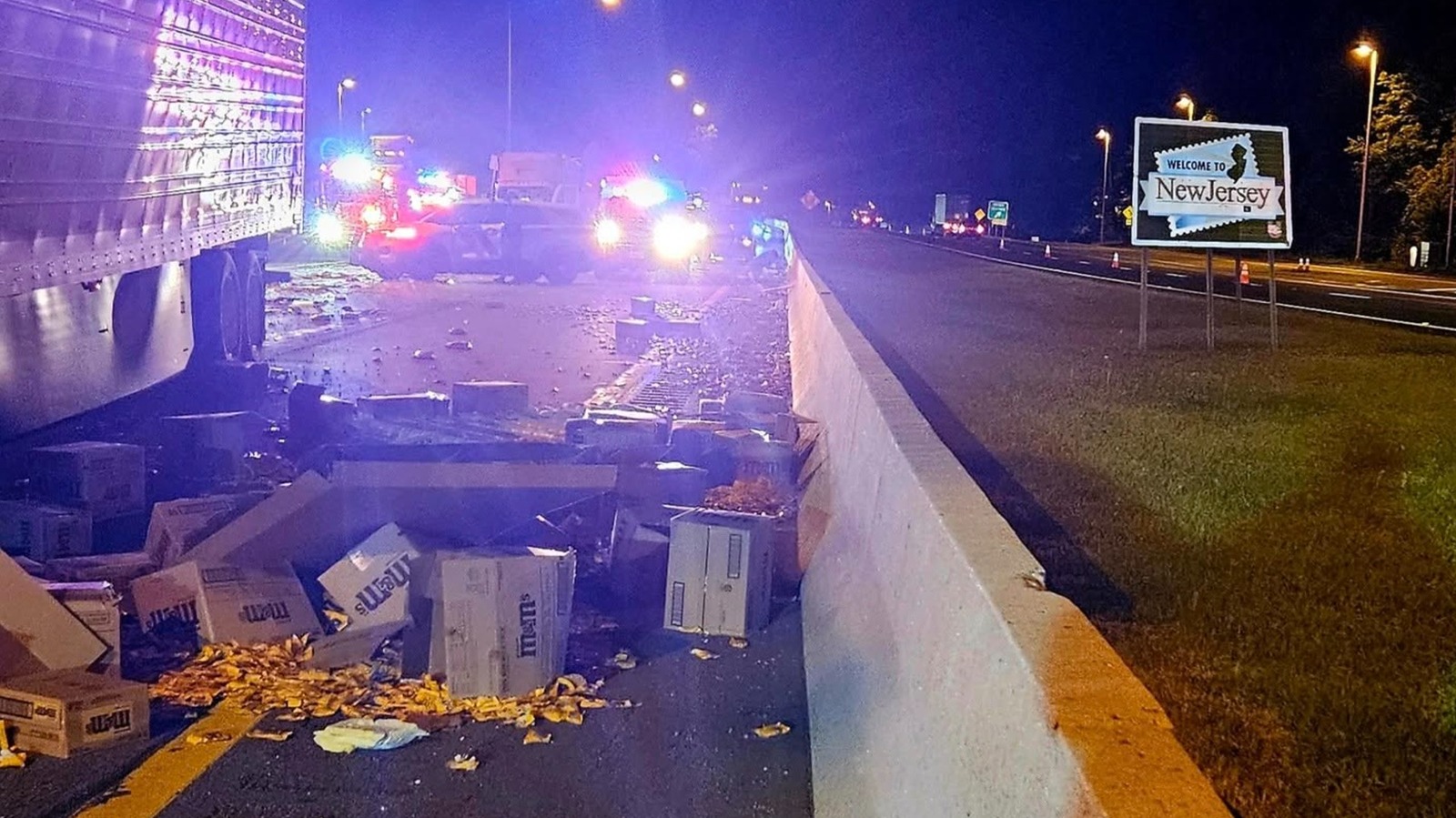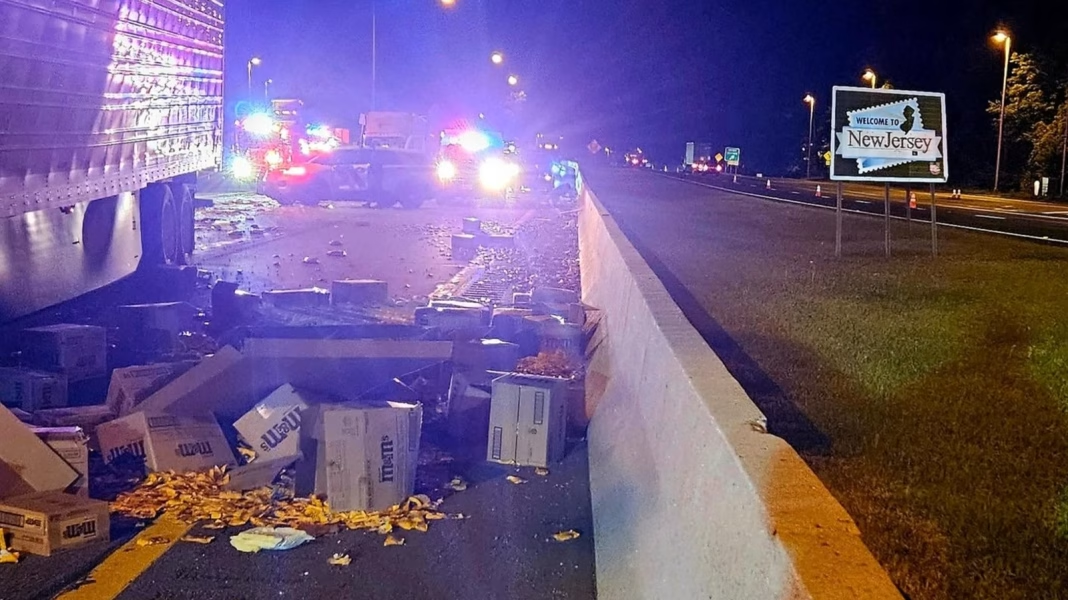What Happened During the Candy Crush on the New Jersey Highway?
Picture this: you’re driving down the New Jersey Turnpike, maybe humming along to your favorite playlist, when suddenly the air is thick with the sweet scent of candy. That’s not a daydream—it’s what commuters experienced when a truck carrying thousands of pounds of candy crashed, spilling its sugary cargo all over the highway. The scene? Equal parts chaos and comedy, with bright wrappers and treats scattered across the asphalt like confetti after a parade.
According to local authorities, the accident occurred during the early morning rush, causing significant delays as crews scrambled to clear the sticky mess. No serious injuries were reported, but the cleanup was no small feat. Imagine trying to sweep up melted chocolate and crushed gummies while traffic inches by. Not exactly your typical Tuesday.
Why Do Food Spills Like This Happen on Highways?
You might wonder how a truck full of candy ends up painting the road with sugar. The answer usually boils down to a mix of human error, mechanical failure, and sometimes just plain bad luck. In this case, investigators pointed to a combination of slick road conditions and a sudden lane change that sent the truck careening off balance.
Large trucks hauling food products are especially vulnerable to spills because of their heavy, often uneven loads. A sharp turn or abrupt stop can send cargo shifting, making it tough for even experienced drivers to regain control. The Federal Motor Carrier Safety Administration notes that cargo-related accidents account for a significant portion of highway incidents each year, highlighting the importance of proper loading and regular vehicle inspections.
How Do Cleanup Crews Tackle a Candy Spill?
Cleaning up a candy spill isn’t as simple as grabbing a broom and dustpan. First, crews have to assess the safety risks—think slippery surfaces and the potential for attracting wildlife. Next comes the heavy machinery: industrial sweepers, shovels, and sometimes even water trucks to wash away the sticky residue.
In this New Jersey case, the Department of Transportation worked alongside local emergency services to clear the highway as quickly as possible. They coordinated lane closures, rerouted traffic, and used specialized equipment to remove the candy without damaging the road surface. The process took several hours, but by midday, the highway was back to its usual flow—minus the sugar rush.
What Are the Real-World Consequences of Food Spills on Roads?
It’s easy to laugh at the idea of a highway covered in candy, but food spills can have serious consequences. Beyond the obvious traffic delays, there’s the risk of accidents caused by slippery conditions. Even after the initial cleanup, leftover residue can make roads hazardous for days.
There’s also the environmental impact to consider. Large quantities of food waste can attract animals to busy highways, increasing the risk of wildlife collisions. Plus, sugary substances can seep into storm drains, potentially affecting local waterways. According to the Environmental Protection Agency, spills of organic material—even something as innocent as candy—require careful management to prevent long-term damage.
Have There Been Other Notable Food Spills on Highways?
Believe it or not, candy isn’t the only treat to have made an unscheduled highway appearance. Over the years, roads across the world have seen everything from beer and chocolate to frozen pizzas and even fish dumped across their lanes. In 2017, a truck carrying cookie dough overturned in Indiana, turning a stretch of interstate into a dessert lover’s dream (or nightmare, depending on your commute).
These incidents often go viral, with photos and videos making the rounds on social media. While they provide a moment of levity, they also serve as reminders of the challenges involved in transporting perishable goods safely.
What Can Be Done to Prevent Future Candy Catastrophes?
So, what’s the solution? For starters, stricter regulations on cargo loading and better driver training can go a long way. The National Highway Traffic Safety Administration recommends regular inspections and the use of advanced monitoring systems to detect shifting loads before they become a problem.
Technology is also playing a bigger role. Some trucking companies are investing in real-time cargo sensors and stability control systems, which can alert drivers to potential hazards before disaster strikes. And let’s not forget the importance of public awareness—reminding drivers to give trucks plenty of space and avoid sudden maneuvers around large vehicles.
Why Do These Stories Capture Our Imagination?
There’s something undeniably captivating about the image of a highway transformed by a sea of candy. Maybe it’s the absurdity, or maybe it’s the reminder that even the most routine day can take a wild turn. These stories stick with us not just because they’re unusual, but because they highlight the unexpected ways our lives can intersect with the world of logistics and transportation.
The big takeaway? Candy spills aren’t about perfection—they’re about smarter adjustments. Start with one change this week, whether it’s giving trucks a wider berth or simply appreciating the unseen work that keeps our roads safe. You’ll likely spot the difference by month’s end.


